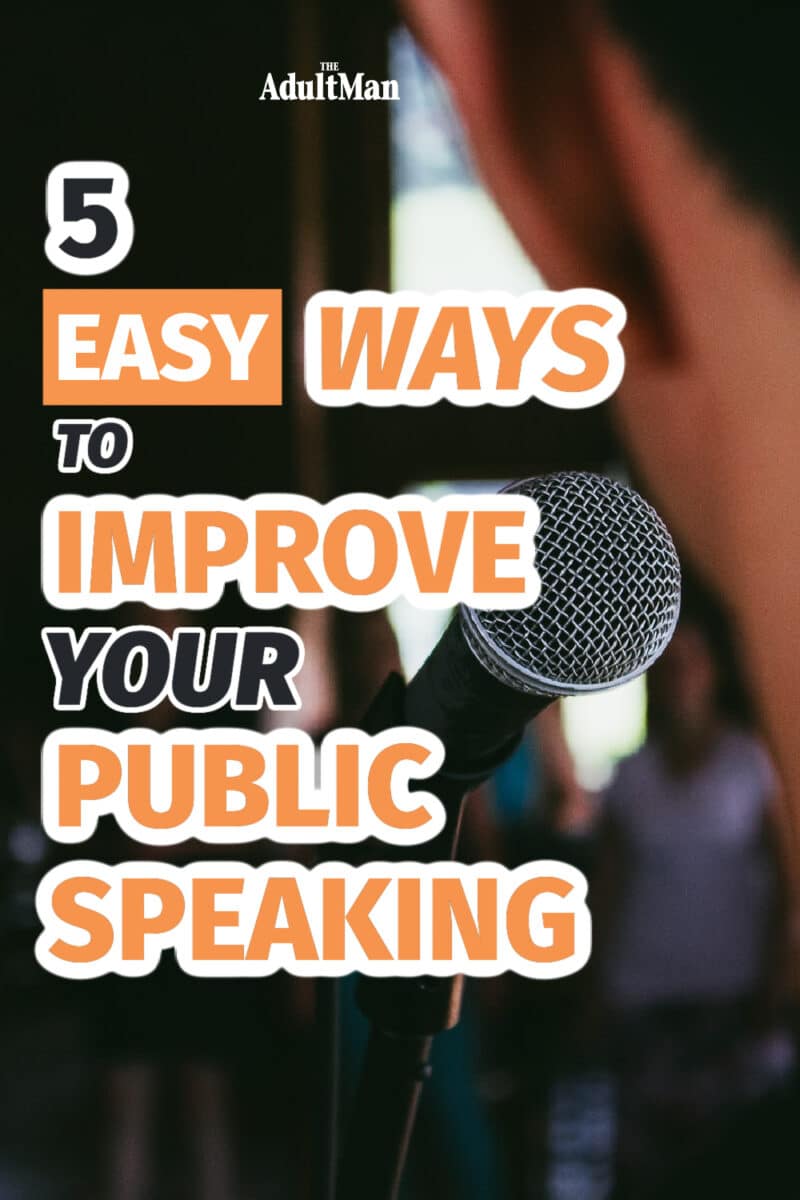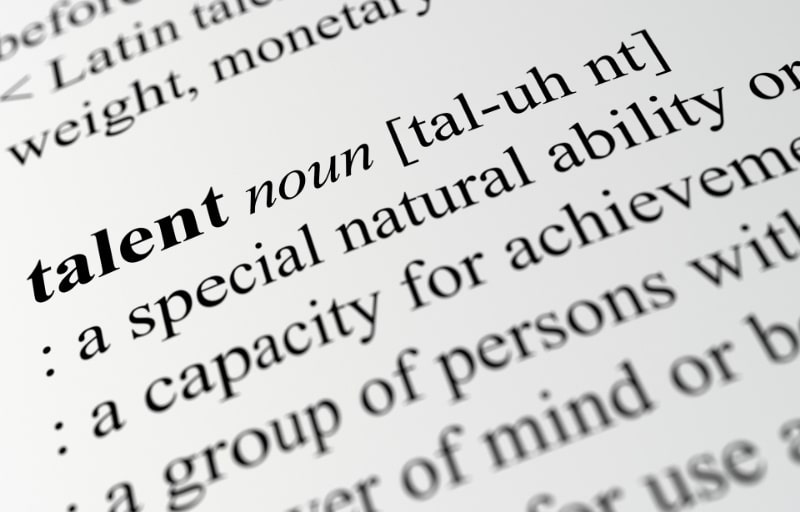How to become a better public speaker
1. Record Yourself
2. Try a Cognitive Nootropic
3. Visualization Techniques
4. Monroe’s Motivated Sequence
5. Ethos, Pathos, Logos
According to the National Institute of Mental Health, 73% of the American public is terrified of public speaking. And yep, public speaking ranks ahead of death, spiders, and heights, that’s not just a made up fact your friend spewed to you over beers one time.
I won’t sugarcoat it, public speaking is downright terrifying. Yet, it’s also rewarding and something you can consciously improve on. Captivating an audience might make for a moment you remember long after the occasion has passed.
The most people I’ve ever spoken in front of was around 7,000 at my high school graduation. The crowd looked like an entire city out there staring back at me. I was loaded with jitters and nervous energy—a mix of euphoric, terrified, and restless. Here’s a photo of the crowd:

And though I was well prepared and delivered my speech with playfulness and confidence, just how I’d practiced, I still wish that back then I had all the tools I’m presenting to you here in this article.
From Monroe’s Motivated Sequence to visualization to cognitive supplement support, here’s five simple, easy-to-pick-up ways to improve your public speaking and nail your time in front of any audience.
Skip Ahead
Do You Have Speech Anxiety?
Speech anxiety is likely what Eminem had in 8 Mile before some of his rap battles. Palms are sweaty, knees are weak…you know the rest. Speech anxiety affects most people on some level and according to the University of Pittsburgh, can include symptoms such as “shaking, sweating, butterflies in the stomach, dry mouth, rapid heartbeat, and squeaky voice.”
It can also include slurred speech, a phenomena in which you get tongue tied and end up mumbling, drifting, and pronouncing words all together without natural pause or separation.
Mild speech anxiety may just be general nervousness, which is completely normal. But for others feeling multiple of the symptoms listed above, it can be a real problem, not to mention a distraction from the task at hand: delivering that speech with confidence and grace.
The meatier tips below will improve all aspects of your public speaking, but here’s a couple more quick tips that are speech anxiety specific. First, get a pen and paper and write down the reason you’re nervous. Oftentimes, when you pull it out of your head and get it down on paper, it’ll seem a lot sillier than you imagined.
Remind yourself of how prepared you are. If you genuinely care about this speech, you’ve probably practiced it ad nausea. Remembering how prepared you are can help you calm down and recognize the effort you’ve put in.
Be realistic. Do actors deliver their lines flawlessly on the first take? Maybe only a small handful of seasoned professionals. If you stumble or miss a word, a siren isn’t going to go off. Most people won’t even notice. Allow yourself some wiggle room for fumbles, it will take the pressure off.
How To Improve Your Public Speaking: 5 Simple Solutions
1. Record Yourself
You might be thinking, “really man”? Yes, you have no idea how utterly effective this strategy can be. Prop your phone up in the corner of your room and record yourself practicing your entire speech or presentation.
You will be astounded how different the footage is compared to how you felt delivering the content. It’s sort of hilarious and existential to watch and critique yourself on film, but you will pick up dozens of little cues and things to work on.
I did this while practicing for a speech in college and though my delivery felt pretty smooth, the proof was in the pudding. I used a slew of filler words like “err”, “um”, “uh”, and “so”, that detracted from my speech and came off as lackluster and nonchalant.
Recording yourself not only helps you learn where you need to improve on in your speech, but it also makes you more expressive. Being expressive is a key to unlocking emotion and helping what you say be transferred successfully to the audience.
Have a peek at this Scott Harrison speech. Scott Harrison is the CEO of non-profit Charity: Water. Look at how he uses his hands and moves around to enhance what he’s saying and express his points.
2. Try A Cognitive Nootropic
Nootropics that support brain function are popping up all over the market. And the good ones work quite well, providing support to your memory, verbal fluidity, mental clarity, and thought processing.

My pick for the cleanest and most effective out there is Alpha BRAIN® from Aubrey Marcus’ company Onnit. While the ingredients are simple, the benefits are noticeable. Alpha BRAIN® is designed to assist with mental clarity and promote flow state. Plus, it’s caffeine free so it won’t add to your jittery nervousness the way many other cognitive supplements will.
When I need help remembering certain phrases and focusing on material in front of me, I find that Alpha BRAIN® provides that little extra spark in my practice routine and on the day of the big presentation.
A few of the core ingredients in Alpha BRAIN® are Vitamin B6, L-Tyrosine, L-Theanine, and Cat’s Claw. Vitamin B6 helps the body use and store energy. L-Tyrosine and L-Theanine are amino acids that support cognitive health, mental alertness, and overall function.
Alpha BRAIN® helps my focus, especially on long days when emails and projects stretch out like molasses and never seem to end. After supplementing with it for two weeks, I had a subtle, but noticeable boost in my mental-clarity.
3. Visualization Techniques
Visualization is a powerful free tool for success. I’ve done this many times before a big event and felt the calming effects it can bring. There are several different ways to visualize your success. I like to lay on my back, eyes closed, and create the scene as it unfolds.
I see myself being called up to speak. I even see how nervous I am because that’s normal for anyone about to deliver a speech or presentation. Even though I can feel my heart thumping, the audience can’t. They can’t see any of my nervousness.
I visualize myself stepping onto stage donning a crisp, friendly smile. I dive into my speech, nailing all my cues, delivering with confidence and grace. I imagine the scene all the way up to when the audience applauses and I thank them and step down from the stage.
This article details a study that was centered on police training and accuracy while aiming a firearm. In the study, the group who practiced visualization techniques were more accurate than those who didn’t. Seeing yourself doing something successfully can help you do that thing more successfully. It might sound all too simple, but it works.
Another helpful resource for visualization is a book called Way of the Seal by Mark Divine, a former Navy Seal who served for two decades. In his book, he details a technique and exercise called “future me”.
This involves identifying your limiting beliefs and visualizing yourself achieving your goals. In the exercise, you practice breathing deeply and then imagining your ideal life in three months, one year, and three years.
Divine distilled 8 principles from, you know, Spartans, Apache warriors, Samurai, and Navy SEALS. These guys are tough nuggets.
4. Monroe’s Motivated Sequence
This is a tried-and-true structure for organizing your public speaking points by Alan Monroe, dating back to the 1930s.
Monroe’s Motivated Sequence comes in five steps: attention, need, satisfaction, visualization, and a call to action. Hey, we’re already familiar with one of those steps.
Attention
Making sure your intro is captivating and sparks immediate interest from your audience. Make your intro memorable by using something like a story, quote, question, or tidbit that is of interest to what you’re talking about.
Need
This is where you bring the audience from attention to something more. Is there a need for change in the topic you’re addressing? Highlight the problem that your speech seeks to help solve or bring attention to.
Satisfaction
Now that you’ve paved the way for the problem or need, offer a solution or insight into how this problem can be tackled. Explain to the audience in clear terms what the solution could look like. Make them imagine it with you.
Visualization
Help the audience visualize the world once your solution has been enacted. How have things been fixed? Using imagery and sensory details helps in this step. Be extra actionable and expressive here in your presentation.
Call to Action
You’ve probably heard this term tossed around in marketing conversation. A call to action is the big request to the audience to do something. To help make a change. This engages the audience and makes them think and feel that they could make a difference by taking action.
5. Ethos, Pathos, Logos
Okay, we’re dating all the way back 2,300 years ago for this tip from the man Aristotle himself. These three pillars are modes of persuasion that relate to public speaking, business, and countless other aspects in life.
Ethos, pathos, and logos aren’t a rigid framework or even an outline like Monroe’s Motivated Sequence, but rather tremendous concepts to keep in mind as you prepare for a speech or presentation. They help you cut out the fluff and untrimmed detail and present in a way that is valuable, effective, and of course, persuasive.
Ethos
This refers to your credibility and character. Remind the audience why you are the person talking about whatever it is you’re talking about. If you’re presenting a business proposal, show them the research you personally conducted and why you’re the person they should listen to. If you’re delivering a graduation speech, talk about yourself as a student who attended your school or university and lived through the experience firsthand. Build trust through credibility and character.
Pathos
This refers to the emotional bond you are establishing with your audience. How do you create real emotion? You can start by being expressive with your tone, with your hands and gestures, with the way you fill the stage and move about the space. Be human. After all, humans connect to other humans. Try sprinkling in metaphors or analogies to heighten and hammer home your points.
Logos
As the name suggests, this is the logical appeal you have with your audience. What you are saying or describing or demanding of your audience should be logical and rooted in truth. If you flounder through your speech using fluffy, ambiguous language, it’s not going to sink into the hearts and minds of your listeners. Be specific and pointed and clear. People are sitting down, often in a relaxed (or even bored) state when they’re being presented to. Engage them with emotion and expression, but make your point with logic and pragmatism.
3 Mistakes to Avoid When Public Speaking
We’ve talked a lot about real, tangible strategies for how to sharpen your public speaking skills. Let’s briefly reflect on, uh, well, maybe, you know, um, the things you can do without.
Don’t misjudge your audience
It’s important to know who you’re talking to and who’s on the other end of all the words you’re delivering. You probably shouldn’t use profanity in a speech if a lot of people will be hearing.
If you’re presenting to a group of buddies in your backyard, it might be a different story. Similarly, you wouldn’t drop high brow niche business language into a speech for a local YMCA opening. Get what I mean? Know your audience so your tone and delivery makes sense for your audience.
Don’t let nervous shakes get the best of you
This is a cheeky little trick to hide how nervous you really are. I don’t know about you, but my hands shake when I’m publicly speaking. In fact, they shake like leaves caught in a Midwest tornado. If you feel them start to flutter, pick them up and use them to create small hand gestures that pair with that you’re saying.
I find that by getting them moving, no one can tell they are shaking. If you’re holding a piece of paper, set it down on the podium in front of you so it too doesn’t shake like a leaf in a Midwest tornado.
Don’t let your eye contact falter
One of the most powerful tools in the public speaking tool shed is eye contact. When used correctly, it can do wonders. When used poorly, it can seem off putting and even make members of your audience uncomfortable. If you catch yourself blankly staring out into the audience, or worse yet, at a single person, pull your gaze around the room.
A good public speaker moves their eye contact around the room, landing on one person for a moment, then bouncing around to someone else, in a friendly manner.
3 of the Best Public Speakers to Draw Inspiration From
Barack Obama
Cool, calm, collected. As the 44th president of the United States, Obama has delivered countless speeches. His subdued, relaxed tone is one of notoriety and something that sets him apart from other speakers.
Obama also employs strategic pauses to emphasize a point and keep his delivery fresh and intentional. Check out this video of some of the key moments from a few of Obama’s many speeches.
Winston Churchill
Winston Churchill is a testament to the power of hardwork and practice. The guy was born with a stutter and a lisp, two traits not typically associated with renowned orators. He worked tirelessly to transform his speech into one of legend. This is how strongly he believes in being a good orator:
“Of all the talents bestowed upon men, none is so precious as the gift of oratory. He who enjoys it wields a power more durable than that of a great king. He is an independent force in the world.” – Winston Churchill
Remember, being a great public speaker is more about practice and diligence than being born with some innate ability.
Brené Brown
Brené Brown is a research professor at University of Houston and has spent 20 years studying courage, vulnerability, shame, and empathy. Her TED talk, The Power of Vulnerability is among the most viewed TED talks of all time.
She reminds us that being vulnerable and being human are essential methods for connecting with an audience. This is pathos at work. By mimicking her style, you too can infuse relatability and emotion into your speech and presentation techniques and truly captivate an audience.
Who’s Better at Public Speaking: Introverts, or Extroverts?
There’s an assumption that being introverted and quieter in general would hinder your public speaking abilities. This isn’t necessarily true. Introverts can practice speaking loudly and confidently by studying some of the greats listed above and making a conscious effort to come out of their shells.
First, try delivering your speech privately to yourself in the mirror or recording yourself in your room. Once you can confidently present alone, then you can practice with a trusted friend, a small group, and eventually the big stage without reverting to old tendencies.
David Byrnes, an introvert expert, keynote speaker, and consultant, works with brands to increase employee engagement and retention. David argues that “the gifts of focus, listening, and reflection give introverts a speaking advantage.”
So have no fear introverted readers. By being yourself and practicing certain methods, you can be just as effective of a speaker as extroverts.
Speak Up
From Monroe to Aristotle to modern strategies like using visualization, or trying a brain supplement like Alpha BRAIN®, I hope there’s something you’re looking forward to using to calm those nerves and nail your time in front of an audience.
Alpha BRAIN® helps my focus, especially on long days when emails and projects stretch out like molasses and never seem to end. After supplementing with it for two weeks, I had a subtle, but noticeable boost in my mental-clarity.
To me, great public speaking stems from employing a variety of strategies ahead of time and taking prep work seriously. I like to record myself several times to pick up on cues I’m missing as the speaker. Before my speech, I’ll watch videos of great orators to get inspired and learn new presentation styles. And I’ll try simple additions like a brain nootropic and visualization which give me added confidence and clarity.
If public speaking is your greatest fear, then go out and conquer it. After you do, everything else will seem trivial and not worth stressing over.
FAQs
What are the 5 P’s of public speaking?
There are a couple different definitions of the 5 p’s of public speaking. One popular definition is: prepare, practice, make it personal, be present, and touch on your passion.
What skills do I need to be a good public speaker?
There are tons of life skills that will aid your public speaking abilities. A few of the most essential are communication, enthusiasm, and the ability to engage an audience through ethos, logos, and pathos. Two skills anyone can master through hard work are preparedness and consistent practice.
What are signs of speech anxiety?
Speech anxiety affects nearly every public speaker on some level. Signs of speech anxiety include shaking, sweating, butterflies, and even slurred speech in some cases











